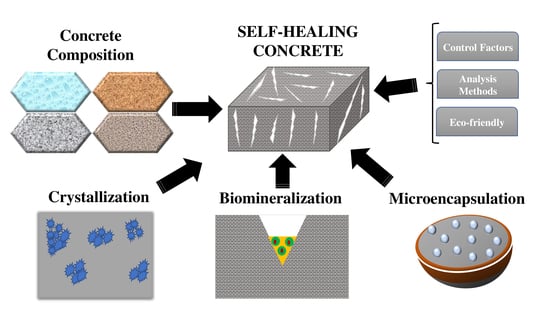


When we think of building materials, strength and durability often come to mind. But what if the material itself could heal over time, repairing small cracks and restoring its own structure? This is exactly what makes lime plaster so unique. Unlike synthetic plasters, lime has a living quality. It reacts with moisture, carbon dioxide, and even tiny cracks in ways that help it maintain beauty and strength for centuries.
In this article, we’ll dive into the science and tradition behind lime plaster, explore its self-healing properties, and understand why it continues to be one of the most respected materials in sustainable construction.
Lime plaster is a traditional building material made by mixing lime, sand, and water. It has been used for thousands of years across civilizations, from Roman aqueducts to Mughal architecture. Its popularity comes not only from its elegant, natural finish but also from its ability to adapt to the environment.
When applied to walls, lime plaster undergoes a process called carbonation. The lime absorbs carbon dioxide from the air and gradually turns back into limestone. This gives it strength and also sets the stage for one of its most remarkable traits: self-healing.
If you’re looking to restore your home with natural materials, consider a professional Lime Plaster Service that understands both traditional methods and modern applications.
Cracks in walls are usually bad news. They let in moisture, weaken structures, and can ruin the aesthetics of a space. But with lime plaster, small cracks don’t necessarily mean permanent damage.
When tiny cracks appear, moisture enters them and dissolves some of the free lime present in the plaster. This dissolved lime then recrystallizes as calcium carbonate when it comes into contact with carbon dioxide. Over time, this process fills the cracks and restores the surface.
Think of it as the material breathing and repairing itself—a cycle of damage and recovery that can repeat indefinitely as long as the plaster is maintained.
Buildings with lime plaster often last for centuries. This is because the material actively prevents small issues from becoming big ones. Instead of needing frequent repairs, lime plaster quietly strengthens itself over time.
Unlike cement-based plasters that trap moisture, lime plaster is breathable. It allows water vapor to move through walls, preventing dampness and mold. This not only improves the health of the building but also of the people living inside.
Every time lime plaster heals itself, it is also capturing carbon dioxide from the atmosphere. In an age where reducing carbon emissions is crucial, using lime is a step toward sustainable living.
The beauty of lime plaster is not just in its science but also in its cultural heritage. In India, a finishing style known as Araish Plaster in India has been used for centuries to create smooth, marble-like walls with a natural sheen. This technique, deeply rooted in history, shows how lime is not only practical but also artistic.
Modern homeowners and designers are rediscovering these traditions. With the right application, lime plaster offers a timeless elegance that fits equally well in heritage restorations and luxury contemporary spaces.
Today’s interiors demand both beauty and performance. Lime plaster meets both needs. Its natural textures create warmth and depth that synthetic materials often lack. Its self-healing properties ensure that walls remain flawless without constant touch-ups.
An experienced Architectural Design Consultant can help integrate lime finishes into your home or project, ensuring that aesthetics and durability go hand in hand.
One of the most surprising qualities of lime plaster is how it interacts with temperature. Its breathability and thermal mass help regulate indoor climates naturally.
In hot weather, lime plaster absorbs humidity and heat, making interiors cooler. In cooler weather, it retains warmth and prevents walls from becoming damp. This makes it an ideal material for Indian homes, where temperatures can vary widely.
If you’re curious to learn more, check out How Lime Plaster Can Keep your home cool for a deeper look at this natural cooling property.
When designing a luxury interior, the choice of wall finish plays a crucial role. Lime plaster’s ability to self-heal, breathe, and age gracefully makes it a strong contender against synthetic plasters.
If you’re weighing your options, an article like right Wall For Luxury Interior can help you see why lime plaster is not just beautiful but also practical for high-end homes.
Many homeowners and builders wonder whether they should choose lime or gypsum plaster. Both have their place, but lime offers a level of resilience and sustainability that gypsum cannot match.
Lime’s self-healing nature, breathability, and natural cooling properties give it a long-term advantage. For a detailed comparison, check out Lime Plaster VS Gypsum.
Lime plaster isn’t just a relic of the past—it’s a blueprint for the future. Modern researchers are developing self-healing concretes and polymers, but lime has been doing this naturally for millennia. Its proven history, combined with its eco-friendly qualities, makes it a material worth celebrating.
As more people look for sustainable ways to build and renovate, lime plaster is making a strong comeback. Whether through traditional methods like Araish or sleek modern finishes, it offers a way to combine beauty, comfort, and resilience.
The amazing self-healing properties of lime plaster remind us that sometimes the best solutions come from nature itself. While synthetic materials may offer quick fixes, lime provides long-term performance, elegance, and environmental benefits.
If you’re restoring an old building, designing a luxury home, or simply curious about sustainable materials, lime plaster is worth serious consideration. It is more than just a wall finish—it’s a living, breathing material that takes care of itself and, in turn, takes care of your home.
House of Lime is a sustainable construction studio specializing in vernacular design, lime plaster finishes, and eco-friendly building techniques to create timeless, climate-responsive spaces.
Copyright © 2025 House of Lime. All rights reserved.
Developed by Alpha Creative Studio